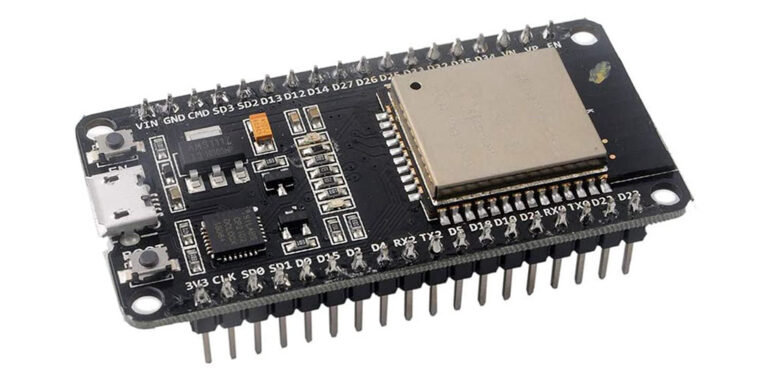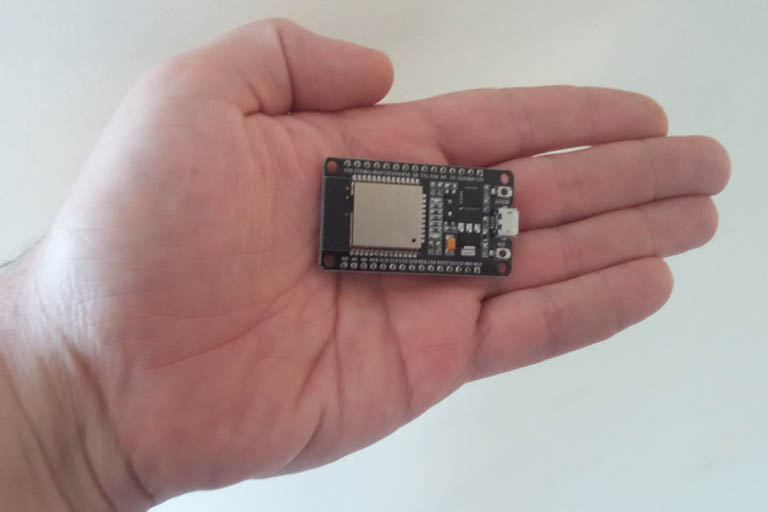The ESP32 microcontroller development board is a breakout board for the ESP32 microchip. This microcontroller board has various I/Os, built-in Wi-Fi, and Bluetooth.
Table of contents
Introduction to the ESP32 Development Board
The ESP32 development board is a relatively small, low-power, easily obtainable, complete and breadboard-friendly microcontroller board, with built-in Wi-Fi and Bluetooth.
It comes integrated with an antenna and RF balun, power amplifier, low-noise amplifiers, filters and a power management module. The board is robust and is capable of functioning reliably in temperatures ranging from far below freezing point up to a little above boiling point.
ESP32 pinout
ESP32 Development Board specifications
Chip: ESP32 (Espressif Systems)
Number of cores: 2
Architecture: 32-bit
CPU clock speed: 160 MHz
Memory: ESP32 chip (ROM/RAM) and external flash memory chip
Flash memory: 16 MB
SRAM: 512 KB
EEPROM: 128 KB
Operating voltage (logic level): 3.3V DC
Input voltage (recommended): 3.3V DC & > 500 mA current
Input voltage (limits): 2.6 ~ 3.6V DC
Power source: 5V via Micro-B or 3.3V via GPIO I/O pins
Networking: 2.4 GHz 802.11 b/g/n HT40, baseband, stack & LWIP
Bluetooth: Bluetooth Classic & Bluetooth Low Energy (BLE)
I/O pins: 33 (4 GPIO IN, digital read)
ADC pins: 18
DAC pins: 2
Operating current (per I/O pin): 12mA (recommended, but adjustable)
Size: 52 x 27 mm
Operating temperature: -40 ~ 125 °C
Interfaces: Serial/UART, SDIO, SPI
Ports: Micro-B USB
Breadboard friendly: yes
Pin size: male, 5 x 2.54 mm
ESP32 Development Board features
Size
Comparatively, the ESP32 is quite small, measuring in at about 52 x 27 mm, making it quite easy to embed into projects.
Power specifications
When compared with other boards, the ESP32 development board requires a relatively small amount of power. Limits are set to 2.6 ~ 3.6V DC. It is recommended to supply more than 500 mA.
When the development board contains a voltage regulator, power can be supplied via the micro-B USB port (which supplies 5V DC). Alternatively, it can be supplied via the 3V3 or VIN pins.
Pins set out 3.3V (or the equivalent of the input voltage is lower than 3.3V) with a somewhat customisable current. Although the default/recommended output current is 12 mA it can be adjusted (apparently by programming).
To get started with the ESP32 Development Board you will need
- Micro-B USB cable Amazon.com or BangGood
- Arduino Software installed on a PC
- A basic micro-electronics development starter kit containing at least a breadboard, breadboard cables and a LED) Amazon.com or BangGood
- NPN 2N2222 switch transistors (optional) Amazon.com or BangGood
Conclusion
The ESP32 development board is a small, low-power, easily obtainable, complete and breadboard-friendly microcontroller board, with built-in Wi-Fi and Bluetooth.



